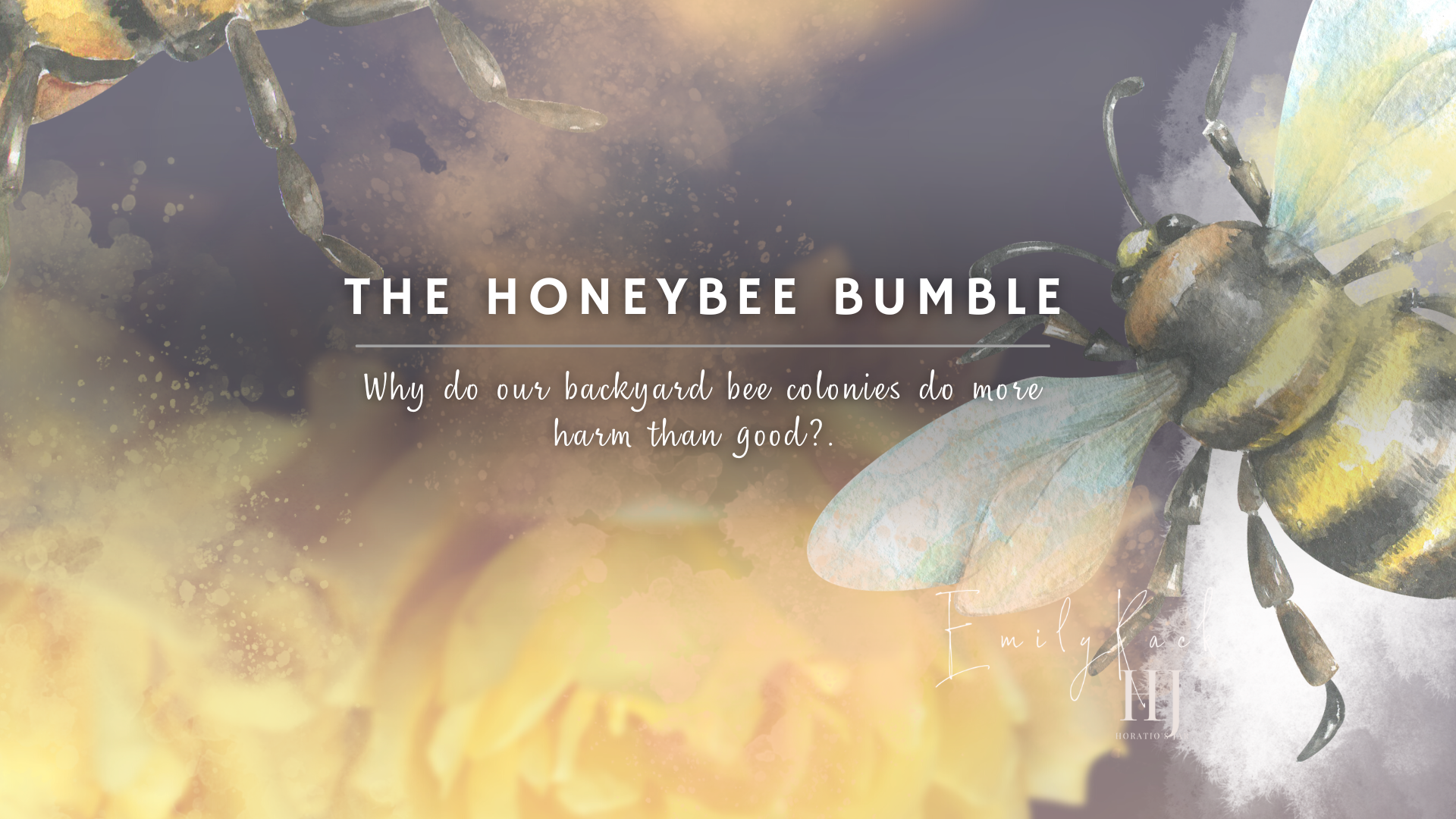Published by: Digital Schools
The Honeybee Bumble – The backyard beehive must go.
The honeybee symbolises industry, abundance, nature and positivity, and we recently immortalised it by minting a two-dollar coin in its honour.
The honey bee has undoubtedly proven itself dynamic and productive. Its ability to adapt and thrive made agriculture and multi-billion dollar industry.
But the honeybee is not the hero we thought it to be. The honeybee and mono-culture farming has catalysed the mass extinction of native insects, plants and animals worldwide.

Mass extinction worldwide is pinned to the homogenised use of the honeybee as the primary pollinator in mono-culture food production.
The honeybee, a native to Asia, Europe and Africa, was shipped here by the Europeans when they first invaded the great southern land.
The early settlers missed their sweet honey and set about domesticating the industrious bee, which today is responsible for creating 30,000 tonnes of honey each year and supporting the $14.2 billion annual agricultural industry.
For the first time, Australia has been hit with a parasite that threatens the collapse of fresh-food production. If the honeybee dies, so do we.
Is that the truth?



Australia faces ‘Agricultural Crisis’.
There is mass panic in the country as we speak. A nasty pest called the varroa mite has infected the 65,000 bee colonies used in crop pollination. Beekeepers are forced to exterminate their hives to protect against the mite’s spread.
The fear of industry collapse has us all concerned about the future of food production in Australia. A vast proportion of the fresh produce we eat comes from mono-culture farms that can only be propagated with the help of the European honeybee.
The problem is that saving the honeybee to protect mass agriculture might be a severe oversight in stopping global ecological collapse. The honeybee is why insects and native pollinators, plants and animals go extinct. And the honeybee, although the key to mass food production, could also be our undoing.

“They’re important for agriculture, but they’re not so good for the environment”.
https://www.scientificamerican.com/article/the-problem-with-honey-bees/

We are saving the wrong bee.
The media has revved up worldwide about bee die-offs and the impact on our food production. The warnings have heightened our awareness of our reliance on the bee for survival. We have unwittingly exacerbated the global ecological crisis in what we believe to be a supportive move in protecting agriculture and the environment by installing honeybee hives in our backyards.
The backyard bee hive is not a conservation practice. It is a contributing factor to ecological collapse. The European honeybee is an introduced species in our country, and like the cane toad, it has turned out to be another massive bumble.
![]()
Guest Contributor: Emily Rack
Business Name: Horatio’s Jar
Publisher: Digital Schools
Emily Rack is a freelance creative writer and researcher, visual content creator, and designer. She is the head of the content production, publication – and editing for Upschool+ Guest Contributors -, and Horatio’s Jar is her content production agency and wellbeing school.
Emily has dedicated her life to researching and understanding matters of the mind, body-, and the human experience. Her discoveries and research are focused on cultivating tools and dialogue that encourage us to live in peace and harmony here on earth.
Her current focus is the environment and human connectivity, conservation, environmentalism, botany, biology-, and the practice of ‘Nature Bathing’. Emily is a writer, digital content creator, seasoned photographer-, and visual artist.
——-
PUBLISHER’S DISCLAIMER: The publisher of this blog post (Digital Schools PTY LTD) works in partnership with the school as a 3rd party provider to help build and maintain the school website. Digital Schools sources a range of experts who provide products and/or services to educational institutions and we work with them to produce and publish topical information in the form of blog posts that we think may be relevant, interesting or topical to families within the community. The views, opinions and content listed in this blog post are that of the guest contributor and/or publisher (Digital Schools). It should be noted that whilst the publisher and guest contributors are acting with the best intentions and in the best interests of the school and their community to provide helpful or interesting information, sometimes the content may not necessarily reflect the views of the school.
The information in this blog post is not meant to be used, nor should it be used, to diagnose or treat any medical condition. For diagnosis or treatment of any medical problem, consult your own physician. The school and the publisher of this blog post are not responsible for any person reading or following the information in this article who may experience adverse effects.
Any references to external websites or sources are provided for informational purposes only and do not constitute an endorsement by the school or publisher in any way and the publisher and/or school cannot guarantee the accuracy of the information listed.
If you have feedback on any content on this platform, you can submit it to the publisher using the feedback link provided at the bottom of this page.


